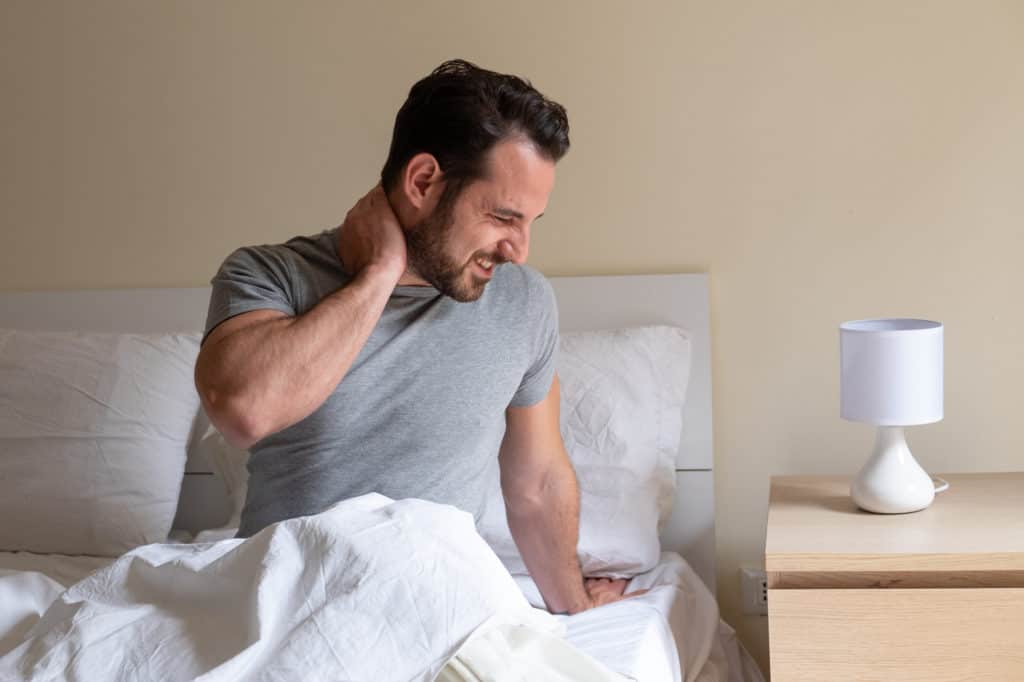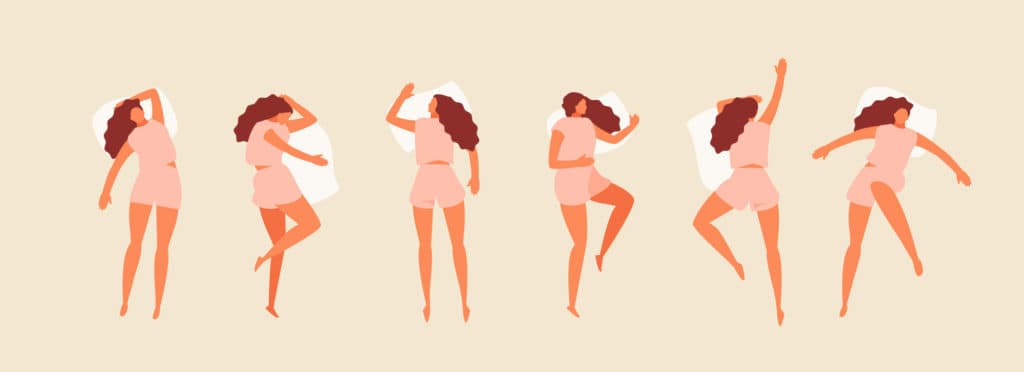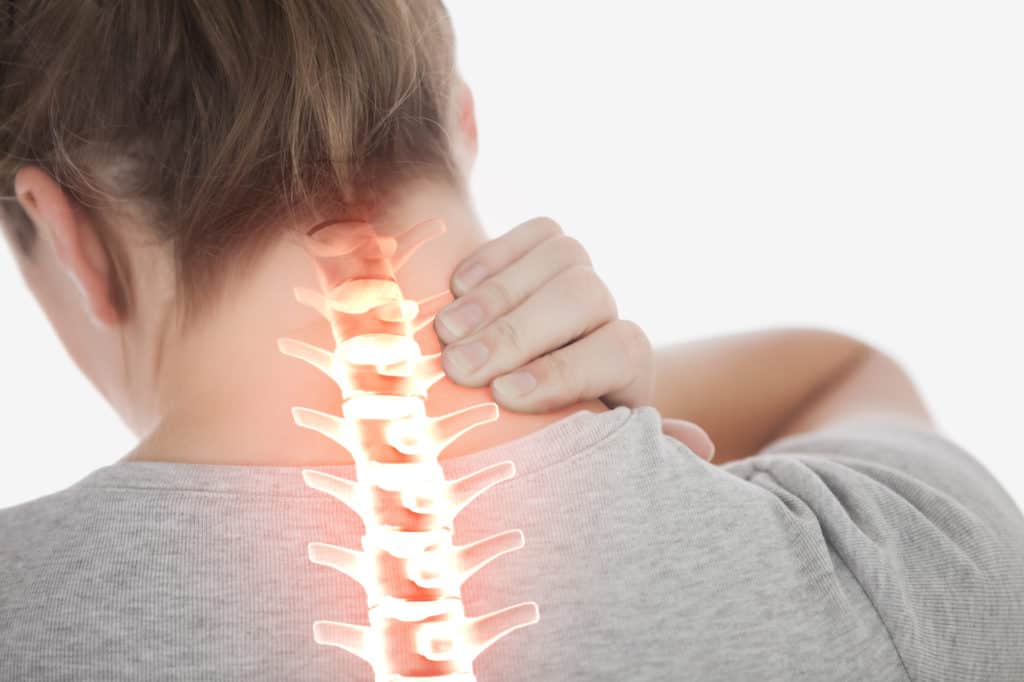
Is neck pain keeping you awake at night?
Sadly, it’s all too common to have a stiff or sore neck. Along with fractures and arthritis, the World Health Organization reports that neck pain is amongst the most common disabilities affecting people worldwide.
Neck pain doesn’t only stop you from sleeping. It also prevents you from working and socializing and sucks the joy out of many other parts of life. Plus, everything is one million times worse when you can’t sleep, right?
While generally, neck pain resolves itself in a few days without cause for concern, for about 50% of patients, it turns into a chronic, long-term condition. The pain itself is terrible, but what makes it even worse is the inability to get a good night’s rest. But by incorporating some adjustments into your sleep routine, you can relieve the symptoms and possibly even prevent neck pain.
More Blogs From Release Works
WorksWhat Are The Benefits And Outcomes Of Myofascial Release?
What Can Myofascial Release Therapy Do For My Emotional Trauma?
Is Myofascial Release Therapy Overhyped?
What Is The Ideal Sleep Position?

For all of us, sleeping in the proper position is essential to rest a good night. For those with neck pain, we recommend sleeping on your side or back because both positions minimize stress on the spinal cord.
While initially, it may not feel very comfortable to adopt a brand-new sleeping position after many years of sleeping on your front. Over time, it will become easier to adapt and get a restful night’s sleep that doesn’t make your neck pain worse.
Here’s a breakdown of why we recommend sleeping on your back or side:
Back position: Sleeping on your back helps align you to the natural spinal curve. It also requires a thinner pillow with the head just raised a small amount in the same ways as standing upright. You may like to choose a memory foam or cervical pillow for additional support. However, if you snore or suffer from sleep apnea, you are likely to find sleeping on your side more helpful than sleeping in your back.
Side position: When you choose to rest and sleep in a side position, it is best to keep your head in a neutral position, with your chin straight. For this reason, it’s essential when you do sleep on your side to choose a pillow that keeps your head in this neutral position. A medium-sized pillow should be enough to maintain a good position without being too high. Large fluffy pillows might look appealing, but they’re not suitable for a stiff or sore neck. In fact, they’re likely to make things much worse.
These two positions are the best sleeping positions for everyone – not just if you have neck pain. We also recommend that you not sleep on your stomach, especially if you have neck pain.
This advice is because your body faces forwards when you sleep on your front, and your neck has to rest sideways. This positioning puts pressure on your neck and can worsen the pain because of the unnatural alignment.
How To Sleep With Neck Pain

The human spine is naturally arched in three areas – curving forward at the lower back and neck. In the upper back area, it curves inward. If you maintain a sleep position that follows this natural alignment, you will reduce or possibly even prevent getting a sore neck on lower back pain.
Pillow choice is important too. If your pillow is poor quality and offers little to no support, it can make neck pain much worse – and sometimes be the standalone root cause of neck pain and stiffness.
On the other hand, good memory foam pillows can be beneficial in neck and back pain conditions – although not everyone gets along with them. Alternatively, you (and your neck) may prefer cervical support or a soft feather pillow. But, again, it’s up to you. Just make sure you choose one that follows the natural curve of your spine.
If you prefer to sleep on your back, you should opt for a reasonably thin pillow as it allows the upper spine area to maintain its natural alignment. Similarly, a cervical pillow supports the head and neck and retains your natural alignment.
Your mattress should not be too soft either because it prevents the essential natural curvature of the spine, which can potentially cause back and neck pain. It would help if you chose a supportive mattress instead.
If you prefer to sleep on your side, make sure your pillow isn’t too high. Choose a medium-height pillow that allows your ears to lie directly on top of each other vertically.
If your pillow is too high, it can cause your neck to bend unnaturally and lead to stiff neck and neck pain. In addition, your chin must be in a neutral position while you’re asleep – without tucking it in because this position causes the head to move forward, causing stress on the neck.
One way to do this and make sure your lower spine is aligned when lying on your side is to place a pillow between your knees.
If you have shoulder pain and a sore neck, you may prefer to sleep on your back or the opposite side, but it’s advisable not to lie on the side where you have a sore shoulder as this can make the pain worse. If you opt to sleep on your back, use a medium-sized pillow as a prop underneath the painful shoulder. This extra support prevents you from moving around and aggravating the sore shoulder when you’re asleep.
However, if you have excessive pain in your back, neck, or shoulders, then you might need to take painkillers to help you get off to sleep temporarily. But we do not recommend these unless they’re necessary.
A session of Myofascial Release Therapy can offer a similar level of pain relief – without the adverse side effects. You can book a session with us here. But if you do take painkillers, do not take them for more than ten days (without a medical prescription) and do not exceed the recommended daily dosage or take them on an empty stomach without food.
Other Things That Can Help You Get A Good Night’s Sleep

-
- Heat Therapy: Using hot and cold packs can also help in pain management and in assisting you to get a good night’s sleep. But we recommend you book a session with one of our therapists to evaluate your neck before you try this. Hot and cold do different things, and one of them may not be suitable for your specific set of symptoms.
- Stretching Exercises: Performing stretching exercises every morning and in the evening before bed will also help relieve your neck pain and assist you in getting a good night’s sleep.
Here are some of our favorite stretching exercises for you to try:
- First, take both hands behind your head and gently press the back of the head forward for 30 – 40 seconds.
- Roll your shoulder blades back and forth in 2-3 sets of 10.
- Squeeze both of your shoulders back and together for 2 – 3 sets of 10.
- Alternately press each ear to their corresponding shoulder in three sets (10 times each).
- Posture: With age, neck pain worsens as the neck muscles weaken. However, maintaining the correct posture can help immensely, irrespective of age. A few posture-related preventative measures to avoid neck pain include:
- Always keep an upright posture while standing and sitting.
- Avoid slouching, especially when sitting.
- Get up and take breaks when sitting for long periods.
- Do not carry heavy bags on your shoulders for long periods.
- When using your phone, hold it in front of your face so you’re not staring downwards.
- Place your computer or laptop at your eye level to avoid straining your neck to look up, down, or sideways.
- Practice stretching exercises every day.
- When traveling by train or plane, use horseshoe-shaped neck support to support your neck.
- Finally, try not to sleep on your stomach.
Myofascial Release Therapy For Neck Pain

Neck pain is something almost everybody experiences at some time or another. As we mentioned, the easiest way to reduce spinal stress and help in neck pain management is to either sleep on your back or side.
Plus, some of the other remedies we mentioned may help. But if your neck pain doesn’t go away on its own after a few days or the pain is severe. We recommend you book a consultation to discuss it with one of our Myofascial Release Therapists.
Myofascial Release Therapy can cure chronic neck pain by dissolving restrictions in your fascia and increasing your blood and oxygen circulation. While also helping you to get a good night’s sleep finally. Don’t put up with neck pain and insomnia any longer – book your free consultation at our Salt Lake City clinic now.

